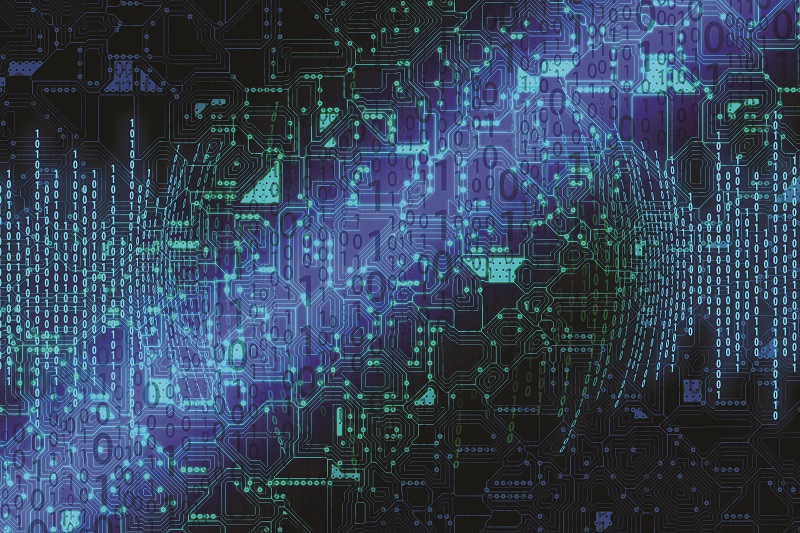Analytical power means healing!


COVID-19 has been the proof of what information technologies bring in the health sector. The global health sector is trying to do a lot of work in a short time in order to prevent the pandemic and to develop the right treatment. Big data analysis is the basis of all efforts to find a single and collective solution to a common problem affecting the whole world. However, this analysis is very different from the standard analysis concept. Being proactive and creating a structure that supports machine learning is a priority. In order to collect meaningful data from different channels and turn it into solution oriented information, coordination and accurate mapping is essential in collecting information.
The concept of mapping actually means harmony in all this architecture. When we look at the issue on the coronavirus axis, the answers to questions such as in which regions the virus is found, why it is more intense in some regions, what are the causes of its spread mean a detailed big data analysis. Data visualization is at the core of the answers to such questions by bringing together big data from different structures. Artificial intelligence and supercomputers also analyze this data to develop a vaccine against the virus at this point. The data science concept, which provides continuous improvement of the analysis of big data, is key not only for the coronavirus, but also for the analysis and correct solution of many different problems. In big data analysis, it is necessary to understand the problem in full detail, followed by taking the necessary steps for solution, and finally “determining the protection methods” when starting from the coronavirus pandemic.
To understand the problem means reaching real ‘big data’ and gathering as much information as possible and adding meaning to them with data visualization techniques. When it comes to taking the necessary steps, it is important to take steps based on the information collected and analyzed. Of course, it is important to determine which step to take, to choose solutions based on the difficult part of the job and its scalability, efficiency and speed, and to create an architecture that is based on the fact that data is constantly flowing. It is not enough to control the pandemic once with big data and analytics. Since there is constantly increasing and flowing data in different channels, it is essential to use this concept as a “shield” against subsequent troubles. Technologies such as artificial intelligence, machine learning and augmented reality are unique opportunities for protection.
Correct data channels are brought together in the right route
China, the starting point of the coronavirus, perceived and continues to receive big data technologies as a guide. For example, thermal scanners located in train stations in major cities of China ‘detect’ the coronavirus using big data and artificial intelligence. In fact, these scanners are located in many different cities in many countries struggling with the virus. Real-time gathering of facial recognition, remote body temperature control and personal health information reveals “added value” in big data. Of course, it should not be forgotten that the limits of the usage of personal big data should be drawn correctly. This will also redefine boundaries and powers to collect and gather big data. Taiwan has also managed to eliminate the expectations that it will face a big coronavirus issue due to being located close to China, thanks to big data analysis. Achieving success with the efficient use of big data, Taiwan actually takes a strong stance against the coronavirus with the steps it took after the SARS pandemic.
Geographic information systems and mobility recipe
Thanks to data science and advanced analytics, it is now possible to access tons of data collected from various aspects and stages of the virus and disease. To help visualize this data, it is also advantageous to see this data in various ways in charts, graphics and tables.
Taiwan, launching the National Health Command Center (NHCC) after the SARS pandemic, actualize the operational command center with this structure, which is positioned as a disaster management center. The Central Epidemic Command Center, launched at the beginning of January under the NHCC roof, stands out with big data analytics. This command center in Taiwan quickly created 124 moves. Each of these moves, including air and sea border control, analytical and situation analysis, quarantine processes, public information, communication with other countries, are fed from big data analytics. Taiwan has created an important pool for big data analytics by integrating its national health insurance database with immigration and customs databases. Thus, real time alerts are provided depending on the person’s travel history and clinical symptoms. Taiwan is a small country. This means being able to be fast in controlling and developing mobile alert. However, putting aside the scale of the country, bringing the right data platforms on the right analytical basis and managing this mechanism correctly are the cores of this process.
Big data and artificial intelligence (AI) also show its strength in many topics, from coronavirus detection to computed tomography scans, smarter contact tracking, analytical based cluster predictions and development of powerful drugs. For example; if speed is essential in controlling the epidemic, anyone who has close contact with infected patients should be monitored for symptoms, isolated if necessary and doing contact tracking. At this point, the development in the geographic information systems (GIS) offers the opportunity to model the spread of coronavirus with various spatial and temporal scales. Smartphones, tablets, smart watches and personal electronic devices (PED) are also indispensable for the big data collection process. For example, when doing contact tracking, healthcare organizations normally focus on investigations with combinations of personal notifications, travel records, CCTVs and police records. However, it is not easy to find, create and synchronize these sources of information quickly. PEDs come to the stage right at this point.
The smartphone, whose global popularity of usage is indisputable, hosts beyond the personal details of its user, both current and historical location, mobility models, internet visit information, most frequently contacted people, social media accounts, interactions and posts. Due to GDPR and KVKK regulations, it is not easy to access such personal data. However, in case of a national emergency decision, authorized telecom companies and public units can also make estimates by monitoring this data.
The role of big data and artificial intelligence play a crucial role in controlling all kinds of health processes. More than geographic location and mobility information, billions of smartphones deliver real time snapshots globally that provide better information and more accurate forecasts for both historical data collection and analysis. Everyone agrees that more advanced algorithms and computational models will be developed to use all these mega sets or supersets of the information collected to get answers to questions, to predict various scenarios under various conditions and to find the best solutions











